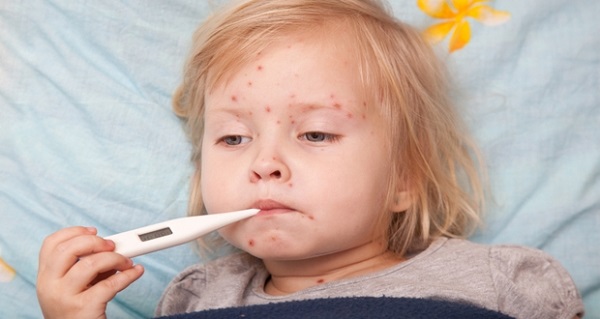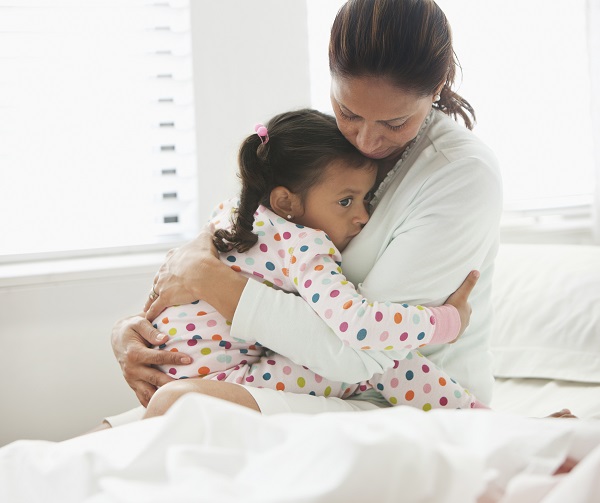
What is Chickenpox?
Chickenpox is a common contagious illness that usually occurs in children, although adults can also be affected.
Chickenpox has been described in medical textbooks for centuries. In the 1600s, an English doctor named Richard Morton described what he thought was a mild form of smallpox as "chicken pox." Later, in 1767, Dr William Heberden, also from England, was the first physician to clearly demonstrate that chickenpox was different from smallpox.
It causes a rash with red, itchy spots that turn into fluid-filled blisters. They then crust over to form scabs, which eventually drop off. Some children have only a few spots, but in others they can cover the entire body. The spots are most likely to appear on the face, ears and scalp, under the arms, on the chest and stomach, and on the arms and legs. They can be very itchy and, if scratched severely, the pox marks leave a permanent scar on the skin.
Chickenpox is most common in children under 10. In fact, chickenpox is so common in childhood that 90% of adults are immune to the condition because they've had it before. However more than 10% of patients in one survey reported having chickenpox on more than one occasion in their lives.
Chickenpox is caused by a virus called the varicella-zoster virus. It's spread quickly and easily through the coughs and sneezes of someone who is infected or through contact with broken skin blisters of an infected person. There is usually an incubation period of between 10 and 20 days. In other words, a person may become infected with chickenpox, however symptoms will not appear until 10 to 20 days later. Chickenpox is most infectious from one to two days before the rash starts, until all the blisters have crusted over (usually five to six days after the start of the rash).
How to prevent the spread of infection
To prevent spreading the infection, official advice is often to keep children off nursery or school until all the spots have crusted over. If your child has chickenpox, try to keep them away from public areas to avoid contact with people who have not had it, especially people who are at risk of serious problems, such as newborn babies, pregnant women, and anyone with a weakened immune system (for example, people having cancer treatment or taking steroid tablets).
Parents often ask should they bring their well child to visit a child who is infected so that they develop immunity to chickenpox. As long as the child is not a newborn baby and has a normal immune system, it is reasonable for parents to make up their own minds on this. Newborn babies are protected by their mum’s chickenpox antibodies for six weeks, and breastfed babies get further immunity from their mum’s breast milk.

Treatment
As there is no specific treatment for chicken pox, treatment is mainly aimed at easing symptoms and trying to make your child as comfortable as possible whilst the immune system deals with the virus. Paracetamol or ibuprofen are available over the counter and will help with fever, muscle and joint pain as well as helping to relieve pain associated with the rash.
Drink plenty of fluids and eat a normal diet if possible. A soothing cream, e.g. Calamine lotion, may help the itch. Calamine lotion stimulates cold receptors on our skin, easing the pain from the blistering rash. A sedating antihistamine (e.g. Piriton) may help with sleep if itch is a problem. This can be used in children over one year old, who can be given a dose at bedtime. Keep fingernails short to stop scratching. Comfortable, loose cotton clothes are best.
Contact your GP straight away if your child develops any abnormal symptoms; for example, if the blisters on their skin become infected or if your child has a pain in their chest, has difficulty breathing, has severe headache, is drowsy, or develops ongoing vomiting.
Chickenpox in adults
Chickenpox may be a childhood illness, but adults can get it too. Chickenpox tends to be more severe in adults than children, and adults have a higher risk of developing complications. As with children, adults with chickenpox should stay off work until all the spots have crusted over.
Some children and adults are at special risk of serious problems if they catch chickenpox, and they should seek medical advice as soon as they are exposed to the chickenpox virus or they develop chickenpox symptoms. They include pregnant women, newborn babies and people with a weakened immune system. They may need a blood test to check if they are immune (protected from) chickenpox.
Chickenpox occurs in approximately three in every 1,000 pregnancies and can cause serious complications for both the pregnant woman and her baby. Pregnant women who are not immune may be given an injection of varicella zoster immune globulin (VZIG). This is a human blood product which strengthens the immune system for a short time but does not necessarily prevent chickenpox developing. VZIG can make the infection milder and not last as long. The injection can be given for up to 10 days after you come into contact with chickenpox and before any of your symptoms appear. VZIG does not work once you have blisters.
Chickenpox and shingles are both caused by the same virus: the varicella-zoster virus. In some people who have had chickenpox, the virus can become active again later in life and cause shingles. You can't catch shingles from someone else. However, you can catch chickenpox from someone with shingles if you haven't had chickenpox before.
Chickenpox Vaccine
There is a chickenpox vaccine but it is not part of the routine childhood vaccination schedule. The vaccine is only offered to children and adults who are particularly vulnerable to chickenpox complications. Children can receive the vaccine from 12-14 months of age. It should not be given within one month of any other live vaccines (for example MMR, yellow fever). For children aged from one year to less than 13 years, two doses are recommended, four to eight weeks apart.








